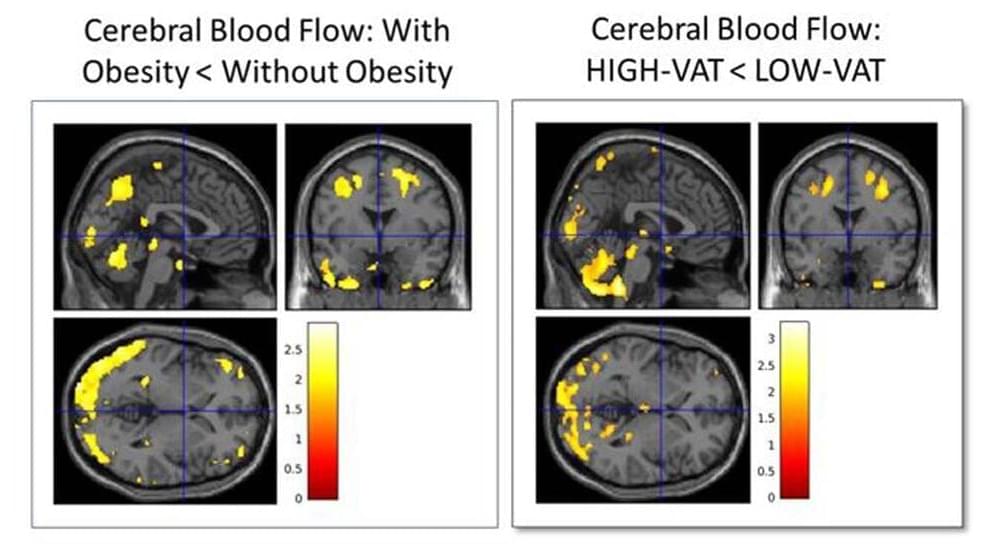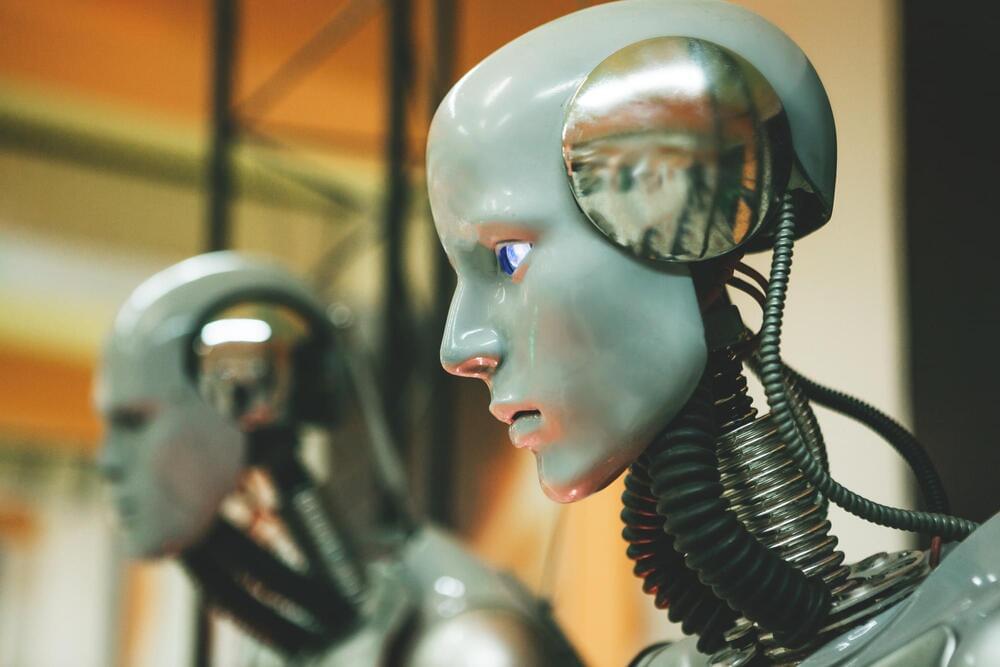A recent study identifies higher-order Van Hove singularities as features that amplify electron interactions, relevant for quantum devices.



Researchers have linked a specific type of body fat to the abnormal proteins in the brain that are hallmarks of Alzheimer’s disease up to 20 years before the earliest symptoms of dementia appear, according to a study being presented at the annual meeting of the Radiological Society of North America (RSNA).
The researchers emphasize that lifestyle modifications targeted at reducing this fat could influence the development of Alzheimer’s disease.
“This crucial result was discovered because we investigated Alzheimer’s disease pathology as early as midlife—in the 40s and 50s—when the disease pathology is at its earliest stages, and potential modifications like weight loss and reducing visceral fat are more effective as a means of preventing or delaying the onset of the disease,” said lead study author Mahsa Dolatshahi, M.D., M.P.H., post-doctoral research associate at Mallinckrodt Institute of Radiology (MIR) at Washington University School of Medicine in St. Louis, Missouri.


Starlink has received the green light from the US authorities to launch its direct-to-cell satellite service, but there are still a number of technical hurdles to overcome before it can actually be made fully available to users.
The US Federal Communications Commission (FCC) has now authorised Starlink, SpaceX’s Internet service provider, to roll out its direct-to-cell satellite service. The idea is to be able to make phone calls directly via satellite, wherever you are, especially in so-called dead zones not currently served by a regular cellular network, such as deserts, mountains or oceans. Indeed, the Starlink constellation of low-earth orbit satellites has the potential to offer worldwide cellular coverage.
Despite this authorization, there are still a number of hurdles to overcome before this service can see the light of day, as the FCC has not responded favorably to all Starlink’s requests. For example, in order to offer optimal telephony and live video services, it will be necessary to exceed current radio emission limits.

Krish, who lives in Hounslow, West London, is not only academically gifted but also excels in music, having won awards as a pianist. The 10-year-old genius has also been inducted into the prestigious Trinity College of Music’s “Hall of Fame” for completing four grades in just six months. He currently holds a grade 7 piano certification, demonstrating his exceptional musical prowess.
Krish’s impressive resume includes winning several musical competitions in West London, where he outshone contestants up to four years his senior. What’s even more impressive is his ability to recite complex instrumentals from memory, without needing sheet music. His parents attest that he can recall entire songs on the piano using only his exceptional memory.
He said, “I don’t get nervous to perform my music at these competitions because I know that I’m not going to mess up.”

For the first time in about 130 years, Tulare Lake reappeared in California’s San Joaquin Valley, stirring both wonder and concern among locals and experts alike as it submerged almost 100,000 acres of privately owned farmland.
Vivian Underhill, a researcher formerly at Northeastern University, has been studying this unexpected phenomenon.
“Tulare Lake was the largest body of fresh water west of the Mississippi River. It’s really difficult to imagine that now,” she says.

Former Secretary of State, Condoleezza Rice, joins ‘Fox News Sunday’ for a one-on-one discussing the state of A.I. and its implications.
Watch more Fox News Video: http://video.foxnews.com.
Watch Fox News Channel Live: http://www.foxnewsgo.com/
FOX News Channel (FNC) is a 24-hour all-encompassing news service delivering breaking news as well as political and business news. The number one network in cable, FNC has been the most-watched television news channel for 18 consecutive years. According to a 2020 Brand Keys Consumer Loyalty Engagement Index report, FOX News is the top brand in the country for morning and evening news coverage. A 2019 Suffolk University poll named FOX News as the most trusted source for television news or commentary, while a 2019 Brand Keys Emotion Engagement Analysis survey found that FOX News was the most trusted cable news brand. A 2017 Gallup/Knight Foundation survey also found that among Americans who could name an objective news source, FOX News was the top-cited outlet. Owned by FOX Corporation, FNC is available in nearly 90 million homes and dominates the cable news landscape, routinely notching the top ten programs in the genre.
Watch full episodes of your favorite shows.
The Five: https://www.foxnews.com/video/shows/the-five.
Special Report with Bret Baier: https://www.foxnews.com/video/shows/special-report.
Jesse Watters Primetime: https://www.foxnews.com/video/shows/jesse-watters-primetime.
Hannity: https://www.foxnews.com/video/shows/hannity.
The Ingraham Angle: https://www.foxnews.com/video/shows/ingraham-angle.
Gutfeld!: https://www.foxnews.com/video/shows/gutfeld.
Fox News @ Night: https://www.foxnews.com/video/shows/fox-news-night.
Follow Fox News on Facebook: https://www.facebook.com/FoxNews/
Follow Fox News on Twitter: https://twitter.com/FoxNews/
Follow Fox News on Instagram: https://www.instagram.com/foxnews/
This system charges without external fields, advancing energy technology.
A research team at the University of Genova has developed the spin quantum battery, an energy storage system that uses the spin degrees of freedom of particles.
The battery utilizes the spin properties of particles for energy storage and release, with a distinctive charging method that eliminates the need for an external field.
Quantum many-body theory and non-equilibrium physics are longstanding research areas within the quantum condensed matter theory group led by Maura Sassetti at the University of Genova, according to senior author Dario Ferraro.
